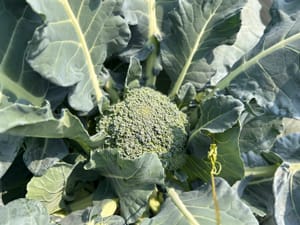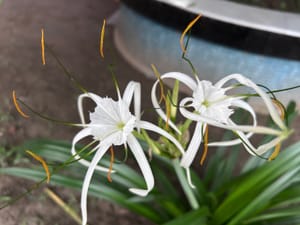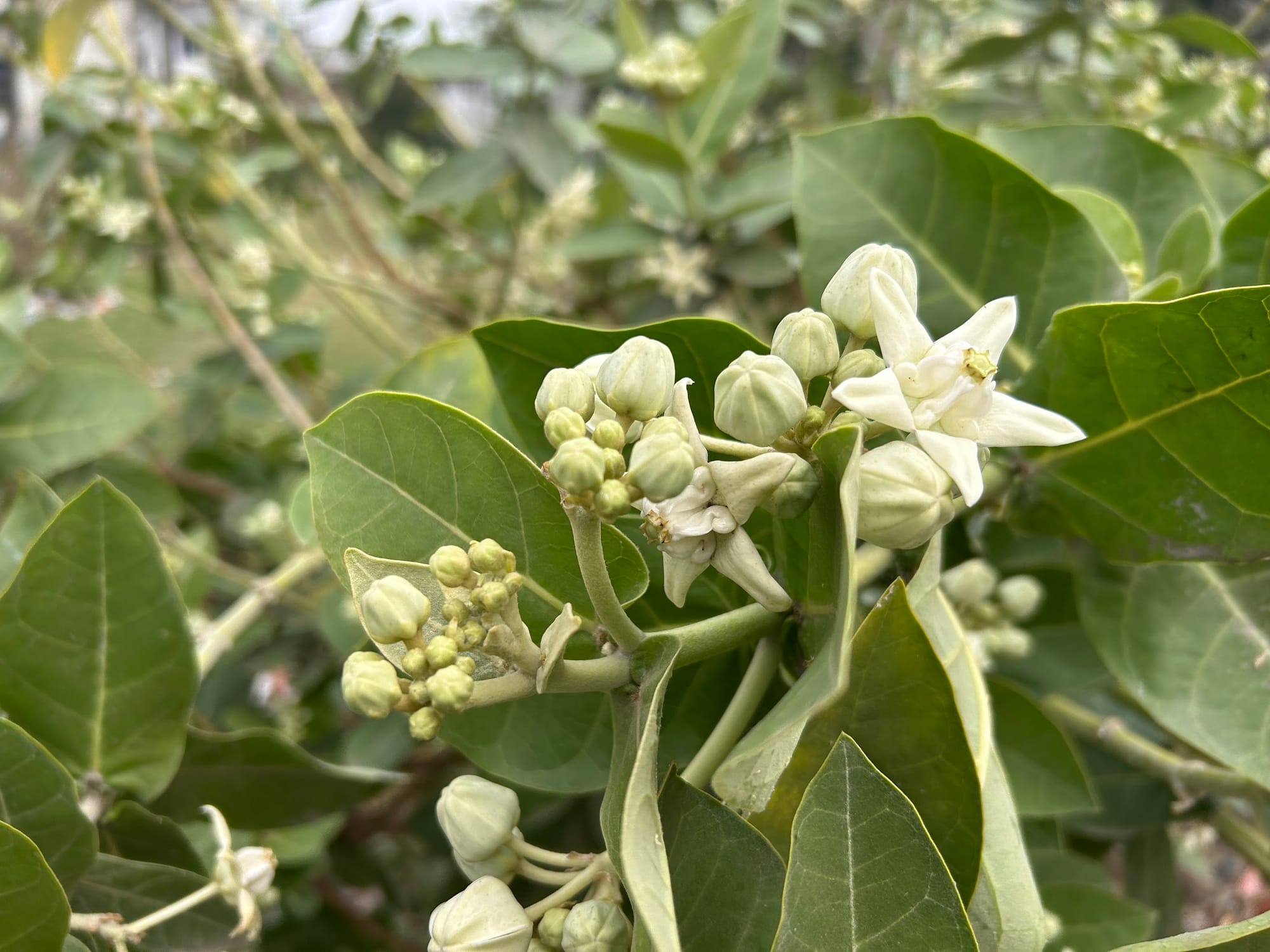
Giant Milkweed (also known as crown flower) is a host plant for the Monarch caterpillars. In this article, you will get to know the growing and caring guide for Giant Milkweed in Florida.
Note: Giant Milkweed is not a native plant here in Florida. It's actually native to asian countries and some African countries. It's scientific name is Calotropis gigantea.
Giant Milkweed is also known as crown flower.
Just look at the flowers. They are crown-shaped, which is why many people call this a crown flower.
Due to the warm and humid climate of Florida, we can grow healthy Giant milkweed in Florida easily.
Giant Milkweed can be grown in USDA Zones 9 to 11. They are drought tolerant, can survive in sandy soil, salty soil, but they can not tolerate freezing cold.
Thus, I will suggest do not try to grow this in North Florida.
I love butterflies and have grown several Giant Milkweed plants in South Florida. The leaves feel velvety to the touch and can grow as large as your palm—plenty for the caterpillars to feast on.
If you are a flowering plant lover like me, have a look at this: Best flowering plants for Florida garden
Is Giant Milkweed safe for butterflies and caterpillars in Florida?
Now, the main concern about this plant for butterfly lovers:
The Giant Milkweed plant is non-native to Florida. Is it safe to grow it here, and does it harm native butterflies and other pollinators?
Legally, it is not declared as an invasive plant, thus, we can grow it here in Florida.
Do you want to support wildlife? Grow the best Florida Native Plants - Here you will get a chart of Florida native plants.
To be honest, Monarch caterpillars prefer Giant milkweed as their host plant over native milkweed. As this is non-native and brought here from outside, the natural breeding process of the butterflies may be disrupted.
If you are planning to grow Giant Milkweed, make sure you plant some native milkweed as well to maintain ecological balance.
Where to find Giant Milkweeds in Florida?
You can search online for it. I tried searching and found it available at TopTropicals website. They are located in Ft Myers, Florida.
They come in two different colors: white and purple (or lavender). And there is another bluish shade.
Have a look at the pictures of my Giant Milkweeds that I have grown:
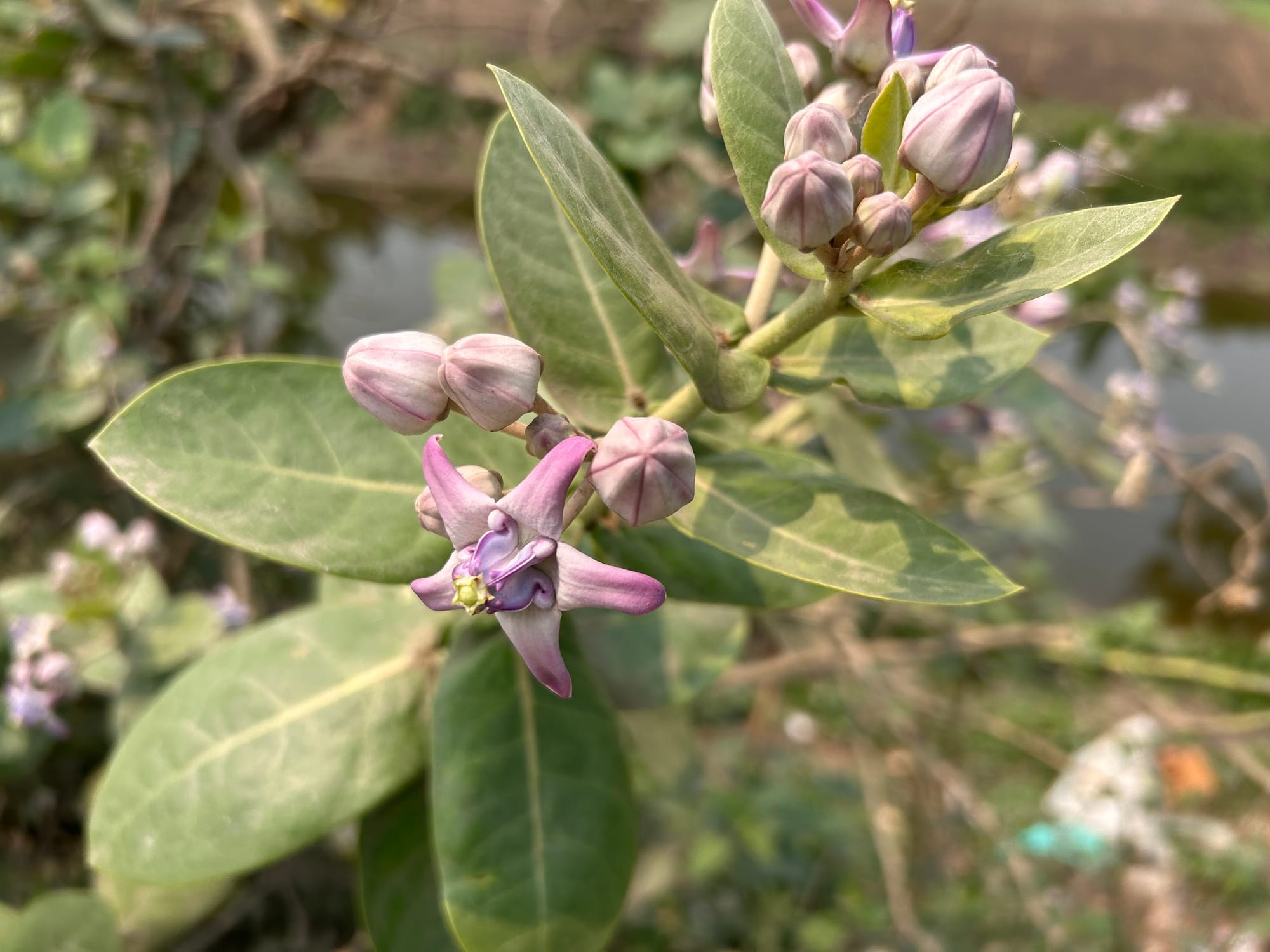
I love this purple one.

Can you see the flowers? They are crown-shaped. ( I already told you this at the beginning of this article)
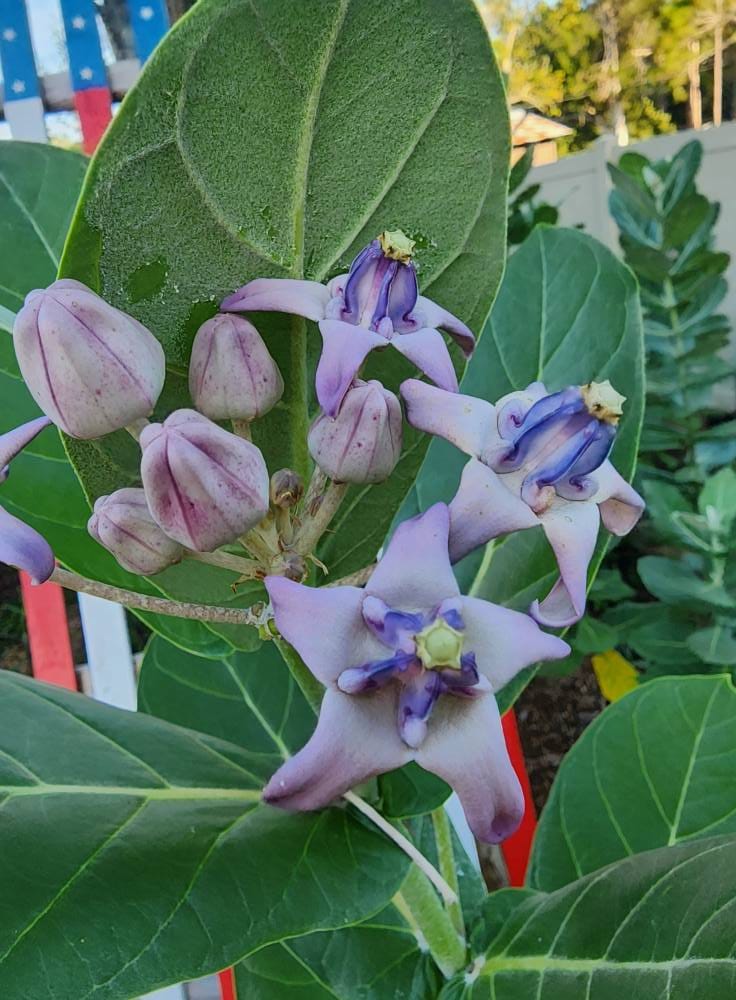
The Giant Milkweed can grow really tall. (15 feet height)
They also spread sideways like a giant. Again 15 feet. I hope now you know why we call this plant a Giant milkweed.
When I was young, I saw this plant, and that was really small. This can go really big even without any care in South Florida.
Blooming time
Giant milkweed can bloom year-round in warmer parts of Florida (Central and South Fl.). But the peak blooming season is summer.
You can witness buds coming after fall (early summer).
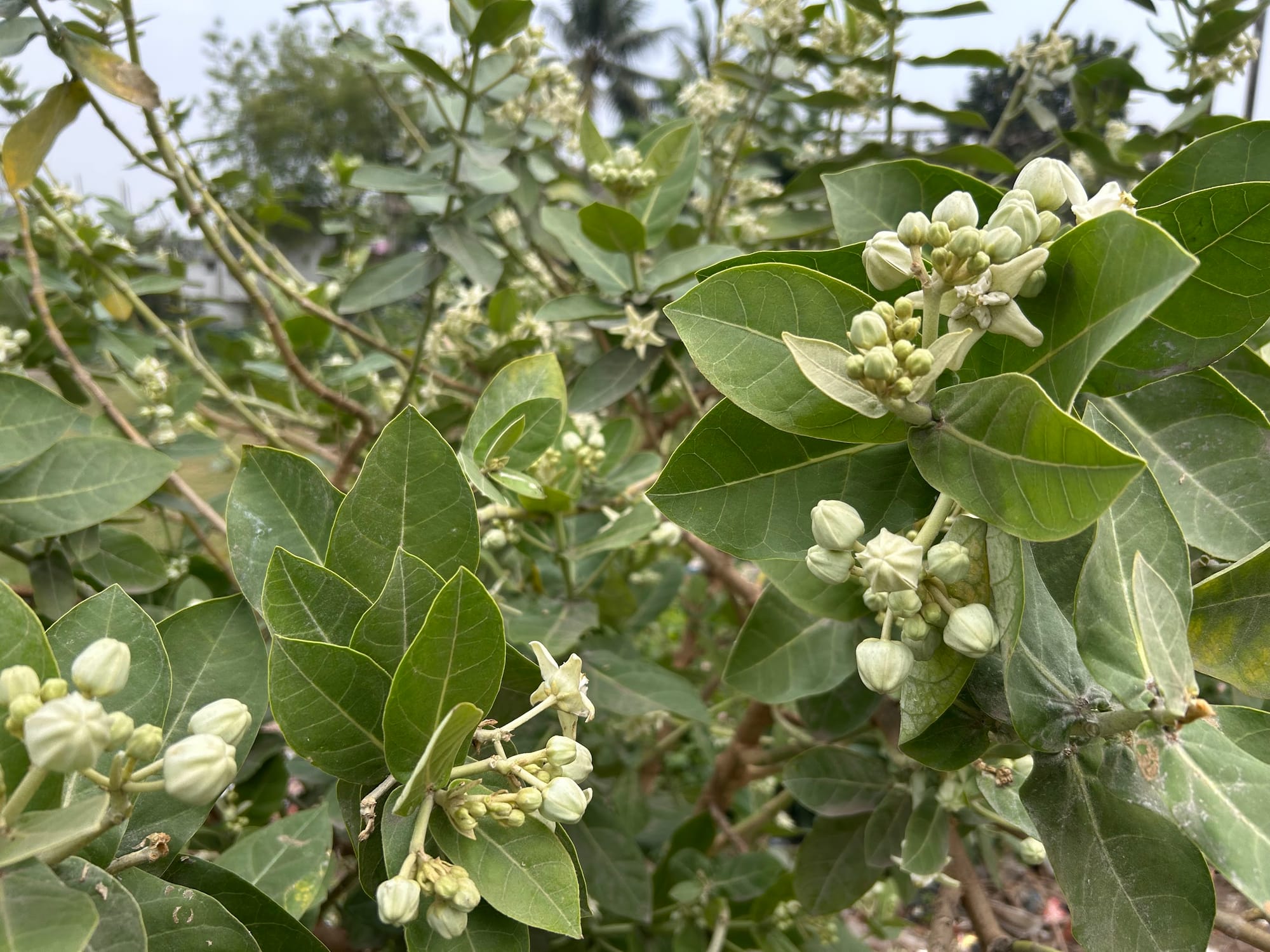
Note: This is poisonous to humans and pets. All the parts of this plant contain white latex sap that is toxic if ingested and can also cause skin and eye irritation.
The toxic compounds include cardiac glycosides (calotropin, uscharin, and others). These compounds can cause heart problems in animals and humans.
Interesting fact: monarch caterpillars feed on it without harm, and this is beneficial for them. The toxins they ingest make them unpalatable to predators.
Propagation of Giant Milkweed
We can grow or propagate giant milkweed from seeds and cuttings. But on GardenVive, I always suggest the most reliable method.
Go with the stem cuttings method. This is a super-easy, faster, and more reliable method to propagate this plant.
Growing Giant Milkweed from cuttings
Choose a healthy stem of 6-8 inches. (Not too young, not too woody)
Let the cut end dry and callous for 1–2 days to avoid rot.
Now, plant it in well-draining soil. If your garden soil is too sandy, mix some organic compost. If the soil is heavy, add cactus mix or perlite.
Water lightly until roots form (usually 2–4 weeks).
Note: Remove a few lower leaves for faster root development. Use proper gloves and put on sunglasses or any glasses to protect your eyes from the white sap.
I have already told you that this is a drought-tolerant and very low-maintenance plant. But if you give it some care, it will grow very healthy.
When you notice the soil is getting dry, water it. No need to water unnecessarily.
Give it proper sunlight, like at least 6-8 hours a day. This is not a shade-loving plant at all. Yes, it can survive in the sun, but it will not give blooms that much in a shady area.
Grow giant milkweed from seeds
Giant Milkweed can be grown from seeds as well. But it will take a longer time.
Once you find a seed pod, let it grow and become mature enough.
The seed pod looks like this:
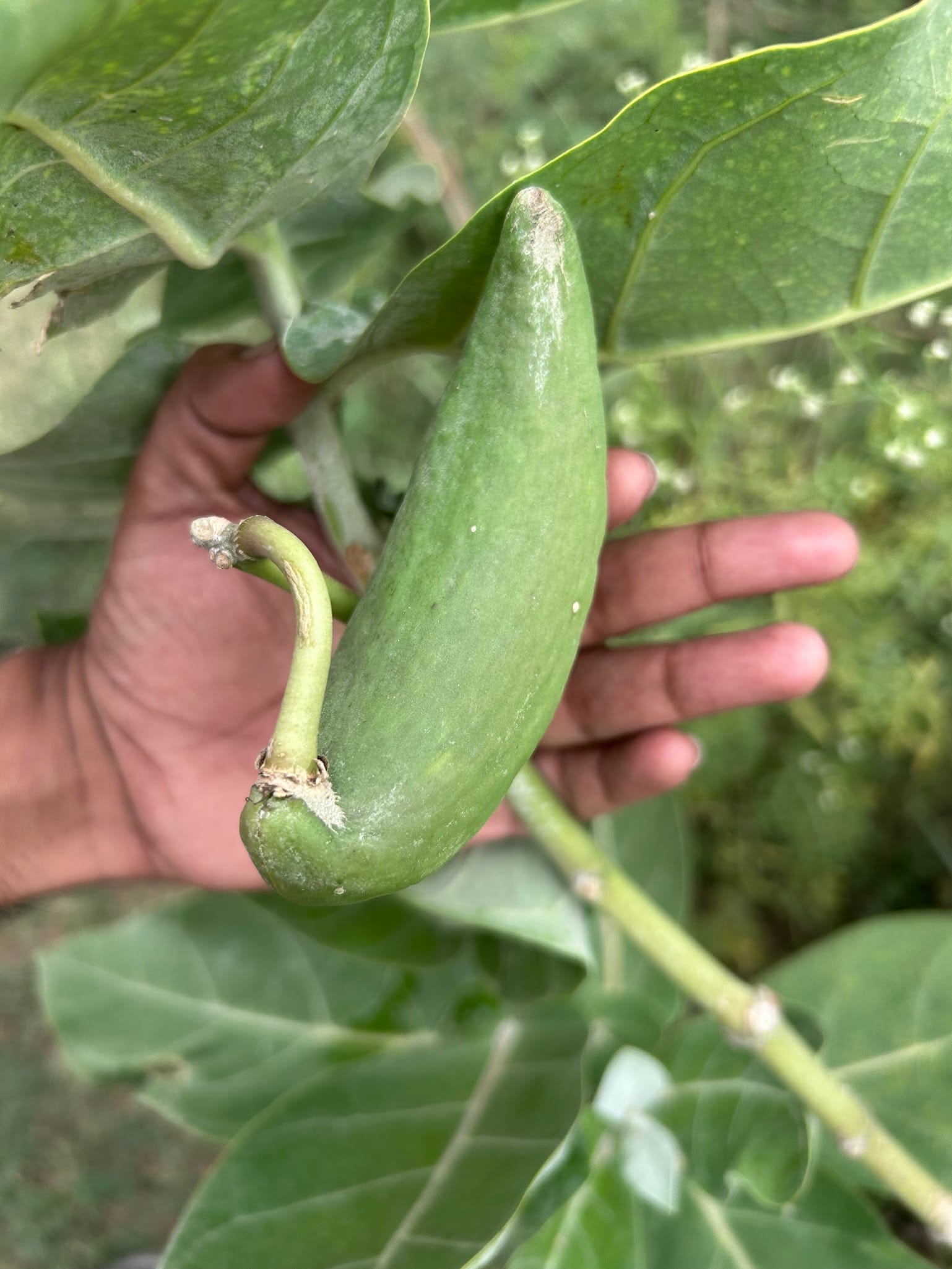
After maturity, the seed pod will split open, and you can collect the seeds from inside. The seeds are nestled in cotton-like fibers.
No need to soak in water. Just sow the seeds directly into the soil (1 inch deep)
Water and wait for germination.
A lot of people in the gardening communities ask:
Is giant milkweed invasive in Florida?
It's a non-native plant, but there is no evidence that it's an invasive plant. You can grow it in your garden as it's not an invasive plant.
Do you know that we can use the white sap mixed with water to get rid of aphids?
But be careful while using this spray, as the sap is toxic. Use a mask and do not spray on edible plants. If you do so, make sure you wash the plant with water before harvesting.
If you want to know other organic methods to get rid of aphids, check: get rid of aphids
Best planting time of Giant Milkweed in Florida
In South Florida, you can plant it anytime of the year, as the winter is mild here.
But if you ask me the best planting time, it will be April to June (Late spring to early summer).
You can follow this planting schedule for both Central and North Florida.
To get the full year planting schedule for Florida, read this article: Florida planting schedule



